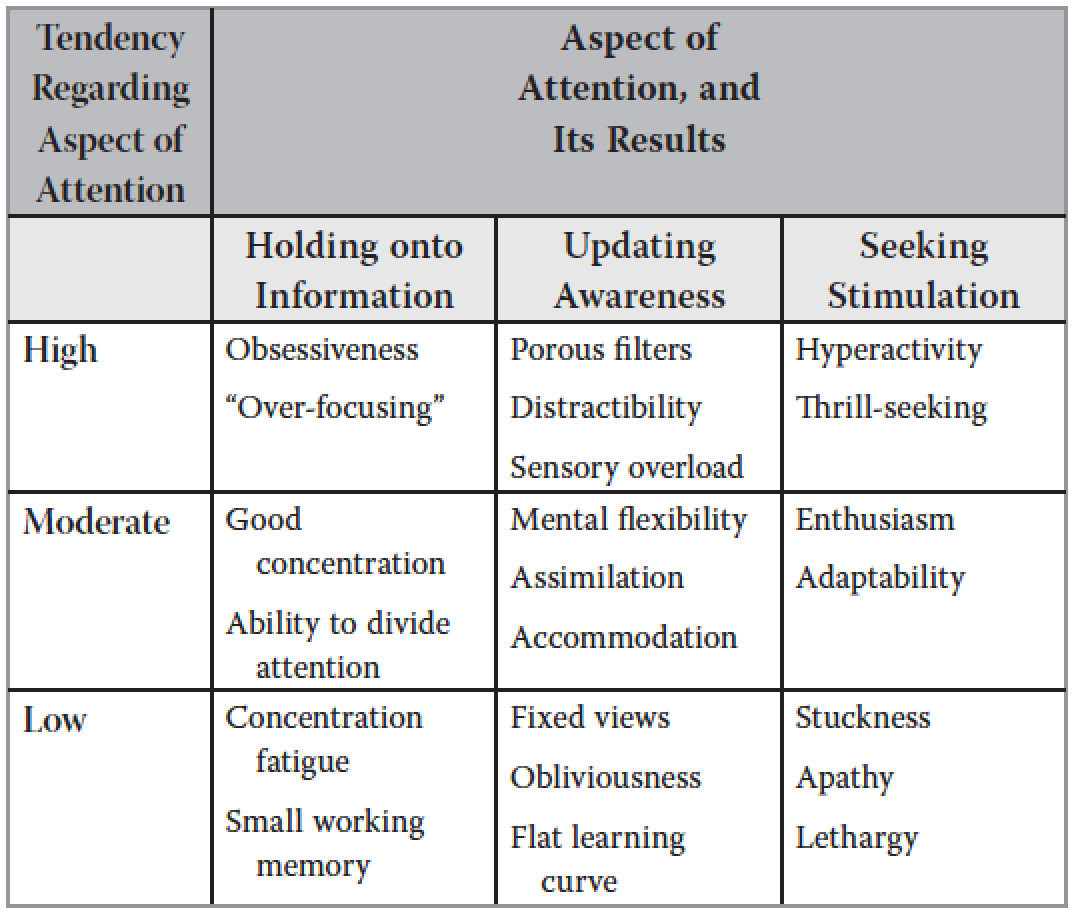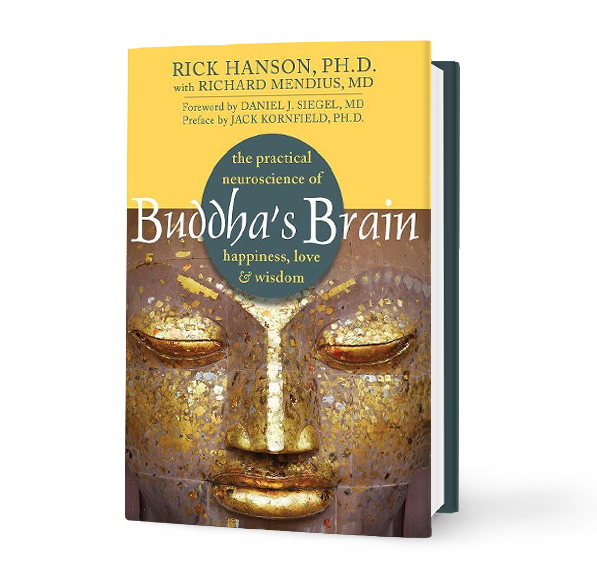01 Aug Foundations of Mindfulness
“The education of attention would be an education par excellence.“
—William James
We hear the word “mindful” more and more these days, but what does it actually mean? Being mindful simply means having good control over your attention: you can place your attention wherever you want and it stays there; when you want to shift it to something else, you can.
When your attention is steady, so is your mind: not rattled or hijacked by whatever pops into awareness, but stably present, grounded, and unshakeable. Attention is like a spotlight, and what it illuminates streams into your mind and shapes your brain. Consequently, developing greater control over your attention is perhaps the single most powerful way to reshape your brain and thus your mind.
You can train and strengthen your attention just like any other mental ability (Jha, Krompinger, and Baime 2007; Tang et al. 2007); Let’s start by exploring how your brain pays attention.
Your Mindful Brain
To help an animal survive—especially a complicated animal like us—the brain manages the flow of attention by balancing three needs: keeping information in mind, changing the contents of awareness, and finding the right amount of stimulation.
Holding onto Information
The brain must be able to keep important information in the foreground of awareness—such as a suspicious movement in the grass of the African savannah 100,000 years ago, or a phone number you just heard. My dissertation advisor, Bernard Baars (1997), developed the influential theory of a global workspace of consciousness—or in plainer terms, the mental chalkboard. Whatever you call it, it’s a space that holds incoming information, old information retrieved from memory, and mental operations on both.
Updating Awareness
Second, your brain must routinely update this chalkboard with new information, whether it comes from the environment or from your own mind. For example, suppose you glimpse a familiar face across a crowded room but you just can’t place it. When you finally recall the woman’s name—Jane Smith, a friend of a friend—you update the image of her face with that information.
Seeking Stimulation
Third, your brain has a built-in desire for stimulation that likely evolved to prod our ancestors to keep seeking food, mates, and other resources. This need is so deep that in a sensory deprivation chamber (in which a person floats on warm salt water in a completely dark and silent space), the brain will sometimes start to hallucinate imagery just to have new information to process (Lilly 2006).
A Neural Balancing Act
Your brain continually juggles these three aspects of attention. Let’s see how this works.
When you hold something in mind, such as a presentation at work or the sensations of breathing, the cortical regions that support working memory (a key component of the mental chalkboard) are relatively stable. To keep them this way, a kind of gate protects working memory from all of the other information coursing through the brain. When the gate is closed, you stay focused on one thing. When a new stimulus comes knocking—perhaps a startling thought, or the sound of a bird—the gate pops open, allowing new information in to update working memory. Then the gate closes behind it, keeping out other information. (Of course, it’s actually more complicated than this; see Buschman and Miller 2007; Dehaene, Sergent, and Changeux 2003.)
As long as the contents of working memory are moderately stimulating, a steady stream of dopamine is produced, which keeps the gate closed. If the stimulation decreases significantly, the pulsing of dopamine-releasing neurons slows down, allowing the gate to open and new information to surge in. On the other hand, a spike in the rate of dopamine release—due to new opportunities or threats—will open the gate as well (Braver, Barch, and Cohen 2002; Cohen, Aston-Jones, and Gilzenrat 2005; O’Reilly 2006).
It’s an ingeniously simple system that produces complex results. To use an example adapted from Todd Braver and Jonathan Cohen (2000), consider a monkey munching bananas in a tree. Steady eating maintains stable dopamine levels and keeps his focus on this tree. But when the bananas start to run out, rewards and thus dopamine levels drop, and thoughts about food in that tree now push into working memory. Or, if a friendly monkey swings onto a nearby branch, dopamine spikes from this fresh stimulus also pop open the gate to awareness.
This dopamine-driven system interacts with another neural system—based in the basal ganglia—that tries to balance the rewards of stimulation-seeking (new food! new mates!) with its risks (exposure to predators, rivals, and other hazards). The basal ganglia are a kind of “stimostat” that registers the stimulation coming through the senses or from within the mind itself. As long as the amount of stimulation remains above a certain threshold, there’s no need to trigger stimulation-seeking. But when stimulation drops below this threshold, the basal ganglia signal your brain to get more now—and you find yourself being provocative in a boring conversation or lost in thought while meditating.
Neurological Diversity
People vary a lot in their tendencies with regard to holding onto information, updating awareness, and seeking stimulation (see the following table). For example, the normal range of temperament includes both those who like a lot of novelty and excitement, and those who prefer predictability and quiet. People at the high or low end of this range often face challenges, especially in modern settings that require sustained attention to things that may not be that interesting (e.g., in schools or corporate offices). For instance, someone whose awareness is very easily updated—whose gate to working memory is propped wide open—has a hard time screening out irrelevant and distracting stimuli.
Whatever your innate inclinations may be, your attention is also influenced by your life experiences and culture. For example, contemporary Western culture strains and sometimes overwhelms the brain with more information than it evolved to handle on a routine basis. Our culture also habituates the brain to a hyper-rich stream of stimulation—consider video games and shopping malls so that a drop in this stream can feel dull and boring. Essentially, modern life takes the jumpy, distractible “monkey mind” we all started with and feeds it steroids. Against this backdrop, other factors—such as motivation, fatigue, low blood sugar, illness, anxiety, or depression—can also affect your attention.
The Results of Different Tendencies in the Three Aspects of Attention

What’s Your Personal Profile?
Each of us has a personal profile of attentional capacities, shaped by temperament, life experiences, cultural influences, and other factors. Taken as a whole, what are the strengths and weaknesses of your attention? What would you like to improve?
One pitfall is ignoring this profile—or worse, being ashamed of it—and then trying to fit your personal square peg into the generic round hole. Another pitfall is never challenging your tendencies. Between these is a middle way in which you both adapt your work, family situation, and spiritual practices to your own nature, and you develop better control of your attention over time.
Individualize Your Approach
To use contemplative practice as an example, many traditional methods were developed in times and cultures that had relatively low stimulation levels. But what about people today who are used to much more stimulation, particularly those at the spirited end of the normal range of temperament? I’ve seen people like this give up on meditation because they just couldn’t find a way to do it that would fit with their own brain.
In terms of its innate effects—distinct from how others react to a person—neurological diversity is much more significant than variations of gender, race, or sexual orientation. If contemplative traditions are to increase the diversity of their practitioners, they need to find more ways to welcome diverse kinds of brains. Further, here in the West, we particularly need to individualize contemplative practices because there is a premium—in busy, “householder” lives—on methods that are targeted, efficient, and effective.
Whether you want to be more focused at work, while talking with your partner, or during meditation, give yourself permission to adapt your approach to your own nature. Be compassionate about your personal challenges to mindfulness: they are not your fault, and the positive emotion of compassion could increase dopamine levels and help steady your mind.
Next, consider which of the three aspects of attention is most challenging for you: holding something in awareness, filtering out distractions, or managing the desire for stimulation. For example: Do you get tired quickly when you try to concentrate? Do you seem to have porous filters, so that you get distracted by many of the sights and sounds around you? Or are you the sort of person who needs a rich diet of stimulation? (Or some combination of these?)
For the rest of this chapter, we’ll explore general-purpose methods for gaining greater control over your attention. Then, in the next chapter, we’ll use the preeminent training in mindfulness—meditation—to improve your personal profile of attention abilities.
Set Intentions
Use the power of your prefrontal cortex to set intentions to be more mindful:
• Establish a deliberate intention at the beginning of any activity that requires focus. Use statements such as May my mind be steady. Or just call up a silent feeling of determination.
• Get a bodily sense of being someone you know who is extremely focused. That uses the empathy systems in the brain to simulate within yourself the mindful nature of that other person.
• Keep reestablishing your intentions. For example, if you’re in a meeting, every few minutes you could resolve anew to stay focused. One of my friends uses a little device that can be set to vibrate at different intervals; he leaves it in his pocket and gets a discrete wake-up call every ten minutes.
• Make the intention to be attentive the default setting of your life by developing the habit of everyday mindfulness.
Supports for Everyday Mindfulness
• Slow down.
• Talk less.
• When you can, do just one thing at a time. Reduce multitasking.
• Focus on your breath while doing daily activities.
• Relax into a feeling of calm presence with other people.
• Use routine events—such as the phone ringing, going to the bathroom, or drinking water—as “temple bells” to return you to a sense of centeredness.
• At meals, take a moment to reflect on where your food came from. For example, if you were focusing on the wheat in a slice of bread, you could imagine it growing in the fields and being harvested, threshed, stored, ground into flour, baked into loaves, and shipped to a market, all before arriving on your plate. You can go pretty far with this in just a few seconds. You might also imagine some of the people who helped turn this wheat into your bread, and the equipment and technology involved, as well as our ancient ancestors who slowly figured out how to domesticate wild grains.
• Simplify your life; give up lesser pleasures for greater ones.
The article above is an excerpt from Rick Hanson’s book Buddha’s Brain: The Practical Neuroscience of Happiness, Love & Wisdom which is available in several languages, editions, and formats. You can learn more or purchase it here.



